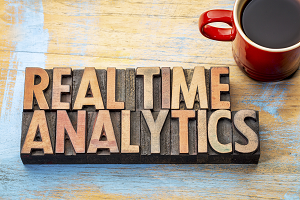Microsoft’s Power BI has more than 25,000 US customers conducting visual data analysis. Meanwhile, MS Excel’s global user base estimates lie between 1 to 1.5 billion. However, the former specializes in business intelligence, while the latter has occupied every individual’s device and workflow. Both offer remarkable advantages for insight extraction. This post will include Power BI vs. Excel comparisons, helping you determine the best program for your data analysis requirements.
Brief Introduction to the Two Best Data Analysis Software
Power BI by Microsoft is a business intelligence and data visualization tool. It helps create engaging dashboards after analyzing datasets for actionable, industry-relevant, and holistic insights. Moreover, you can develop unified reports or leverage Power BI consulting services for real-time data stream analytics. Its Azure-assisted big data integration is also exceptional.
Microsoft Excel offers user-friendly workbook creation, modification, and collaboration for data analysis. A homemaker can use it to track groceries. Meanwhile, a global enterprise will monitor complicated project progress reports using Excel. It has become a universal auto-calculation overlord in today’s age of data-centric decision-making. For instance, mastering advanced MS Excel skills can unlock infinite career upgrade opportunities in finance, project management, and public administration.
Power BI vs. Excel – Finding the Better Data Analysis Tool
1| Data Visualization Priorities
Power BI is best for storytelling with dynamic and real-time visualized reports, but MS Excel is appropriate for tabulated static data, graphs, and standard documentation. The former also features drag-and-drop interactivity. Excel, on the other hand, prioritizes straightforward data visualization. Nevertheless, most data analytics services prefer utilizing both, given the ease of Power BI and Excel integration.
2| Suitability for Enterprise Data Management
Excel enables small to medium businesses to monitor inventories, record transactions, and preserve customer contact details for data analysis. Global brands can use Excel at the regional branch office level to perform similar activities.
However, unifying data from those disparate sources for organization-wide performance, risk, and cost insights requires more advanced business intelligence tools such as Microsoft Power BI.
3| Remote Data Retrieval
Cloud-enabled data warehouses quickly connect to Power BI, facilitating ease of remote data transfer, transformation, and modeling. You can create collaborative workflows with Excel using Microsoft Online or OneDrive features. However, they will be inferior to one-click dashboard updating and sharing capabilities in the Power BI ecosystem.
4| Vast Dataset Processing Support
Excel installed on a workstation with commendable technical specifications can handle extensive datasets. However, Power BI streamlines big data or similar analytical approaches. Consider the difference between data scopes across departments, factories, and warehousing facilities.
MS Excel excels at small to medium datasheet organization, customization, and standard chart creation.
However, more intricate supply, banking, and branding relations exist beyond the factories and warehouses. Power BI is suitable for summarizing and visualizing their stories through data visualization.
5| Programmability and Familiarity
You can enhance Excel’s calculations using Visual Basic for Applications (VBA) and functions. Therefore, advanced data users embrace Excel due to the perceived freedom of “doing literally anything and everything with the data.”
Additionally, Power BI learners must overcome a reasonably time-consuming learning curve. It applies to everyone, whether you are a young or seasoned data analyst.
If you have a technological background, you will notice restrictive aspects of Power BI. After all, Excel has diverse programmable methods and is well-recognized worldwide. So, it has an established community of data entry, statistics, and mathematical logic enthusiasts.
Conclusion
Employing Power BI’s rich data visualizations for storytelling will be vital to showing your insights to multidisciplinary audiences. Still, Excel will continue to thrive due to global stakeholder support and reach. The former can accelerate enterprise data unification, while the latter will keep data recording seamless.
As a result, this Power BI vs. Excel comparison reveals the need to embrace both. Companies must also evaluate whether workers have adequate data literacy before mandating organization-wide Power BI adoption.
Alternatively, brands can benefit from established Power BI experts’ work ethics, strategies, and acquired wisdom through corporate problem-solving. Prioritizing gaining visually rich performance reports will help prevent managerial delays, fostering a better environment for dynamic discussions and insight explorations.
The post Power BI vs. Excel: Which is Better for Data Analysis? appeared first on Datafloq.










